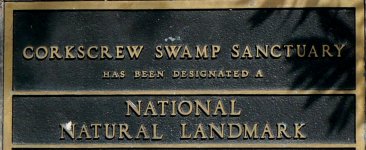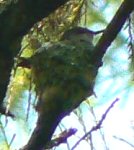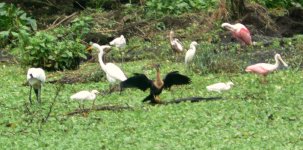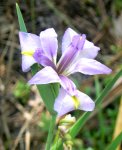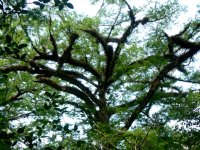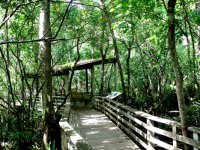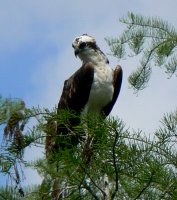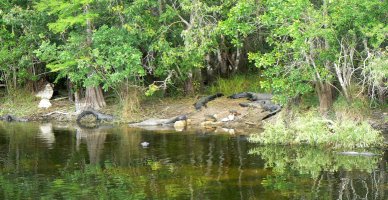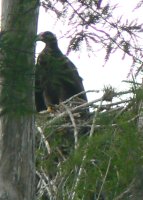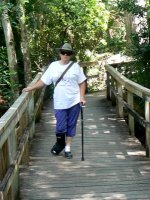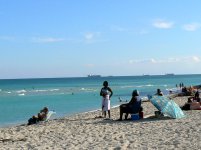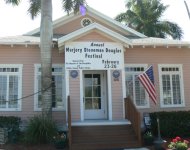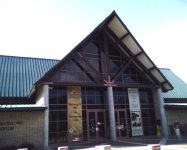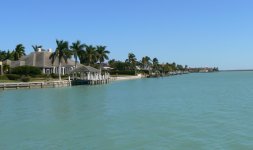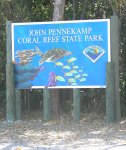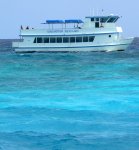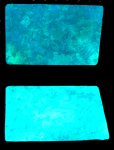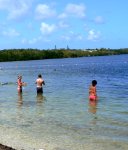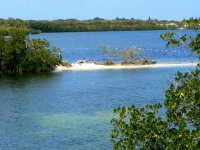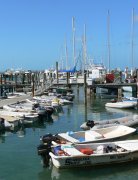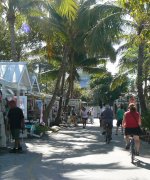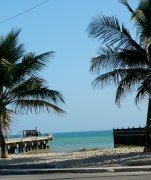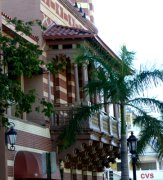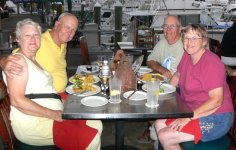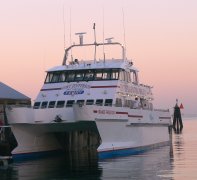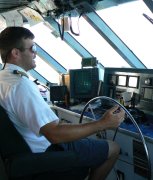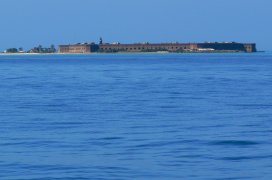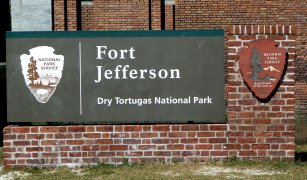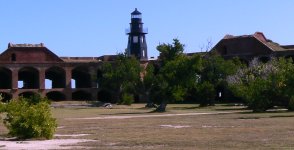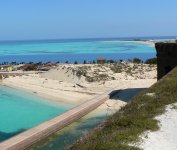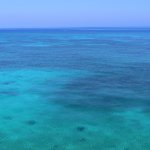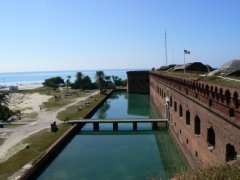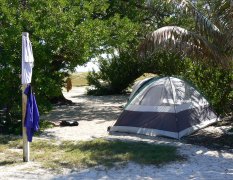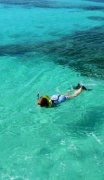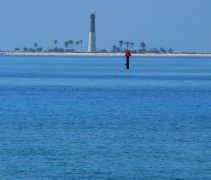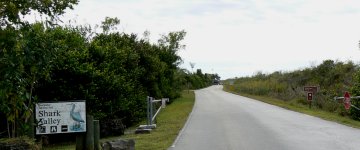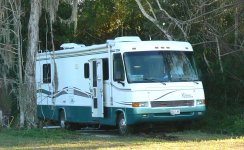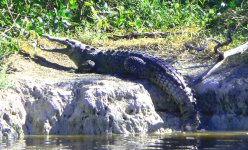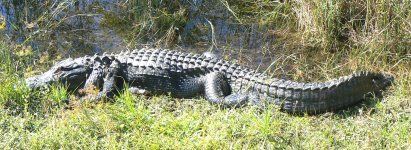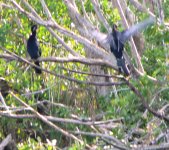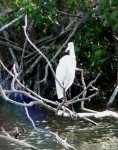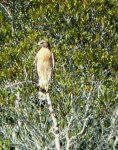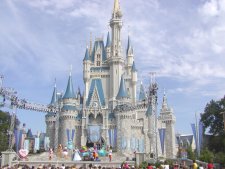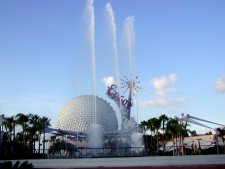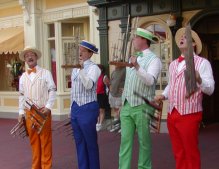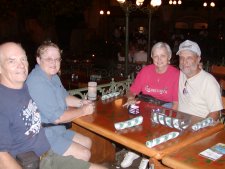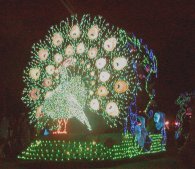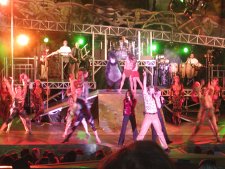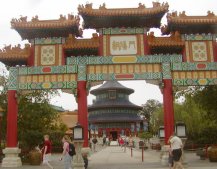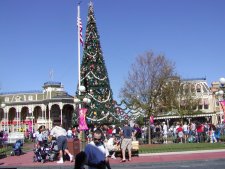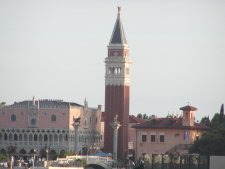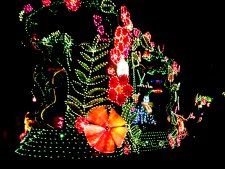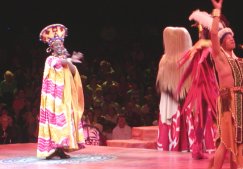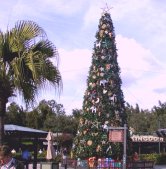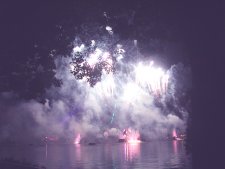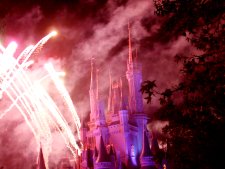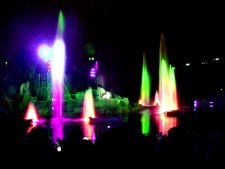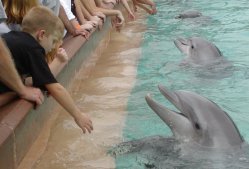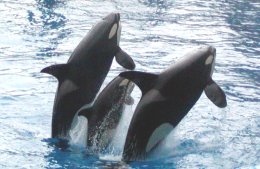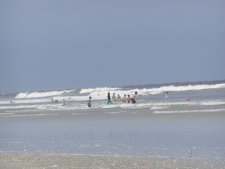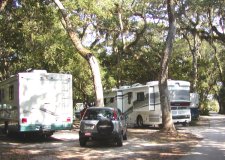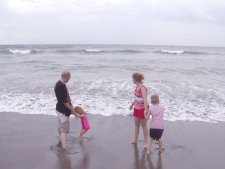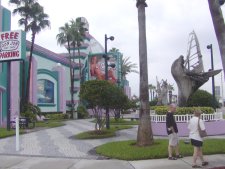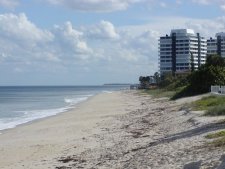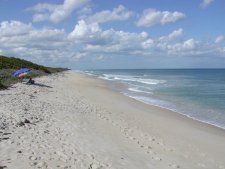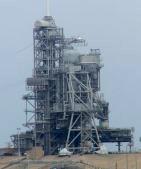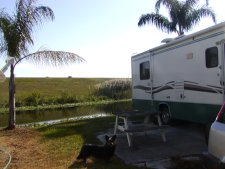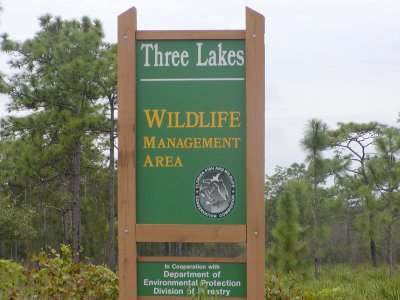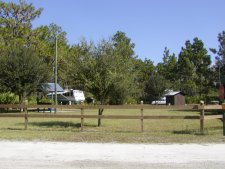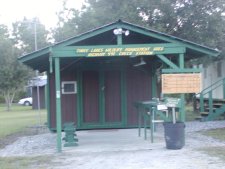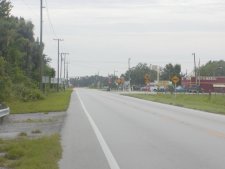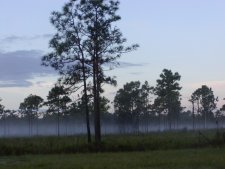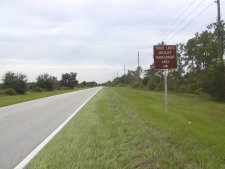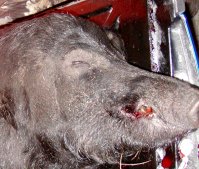Not far from Everglades National Park, near Naples, Florida there is a private, non-profit preserve that protects some of the last remaining, undisturbed bald cypress swamps that remain in the world. The area does charge admission but is well worth the time and the cost to visit. It is seen via a boardwalk that is about 1.5 miles long and it wheelchair access able. When we visited it we spent about four hours in seeing the area. There is a great deal to see.
Corkscrew Swamp is not just birds, but it also conatins an amazing and beautiful collection of plants, many of which are rare or becoming so.
Should you ever find yourself in Naples, I highly reccoment this as a place not to be missed for anyone who loves the outdoors and nature. Yet another preserve that was between Naples and Shark Valley area was a state preserve called Faxahache.
No visit to south Florida is complete without at least one visit to Miami Beach, so we did take care of that while here. We also visited Everglade City and San Marcos Island. Everglade City has an interesting museum and several excellent resteraunts.
Another very interesting place which we visited in south Florida was John Penneycamp State Park. The park is mostly water and reef and we took a tour of the reef there by glass bottom boat. The tour was very interesting and well nariated. It was about two hours and we highly recommend it to others.
Getting farther away from our base at Shark Valley, we also spent a night in a B&B in Key West to explore the city and then to visit Dry Tortugas NP.
This is an interesting, but very tourist oriented city. It seems to attract everyone from the most wealthy to the street people. Key West is the southern most point in the United States. There are many places to eat, drink and be entertained. There are even street shows on the waterfront every evening.
After dinner with friends on the waterfront, we spent the evening watching the entertainers and then retired to our B&B for an early morning start on our trip to Dry Tortugas NP. At 7:30 the next morning we boarded the Freedom II for a 70 mile trip west to this island national park. Boat or seaplane is the only way to visit.
The boat was very nice and breakfast was served once we got underway. By my GPS our speed averaged 38 mph. This is the larger of the two daily boats to the island and while it cost $140 each, about $10 more than the other boat, we all felt that it was well worth the extra cost. For those who wish to snorkel the equipment is provided. There is a small tent area for those who bring the equipment but you also must supply your own water as well.
Fresh water is very limited as it is hauled in by boat as the only fresh water on the island is from rain. The fort stored all run-off in cisterns for their use.The old fort was constructed in the pre-civil war era and the bricks were all brought in by ship from the mainland. It was manned during the war, even though it had not been completed. Later in WWI it became a coaling station and anchorage for ships of war. There is a great deal of history here as well as beauty.
While the trip is rather expensive as park visits go, this was a day well spent and I would not hesitate to make another trip if the opportunity should arrive.
On November 29, 2008 we arrived at our winter stop, the Shark Valley Area. Everglades NP is the third largest national park in the contiguous 48 states. This park is about 1.5 million acres and has a very wide range of topography. Our actual home was in what the park staff call the Trail Center and was physically just inside of the Big Cypress National Preserve, which is the park's immediate neighbor. It was privately held land which the park service purchased for a residence area for seasonal employees and it contains four housing units and five RV pads.
The Trail Center is an employee only area and is located just off of US41 and is behind a locked gate. We have full hook-ups with 50A power and there is also a laundry room with three washers and three dryers for out use. The RV pads are not the best and I must say that our site was the one that we consider to be the very best, even though we nearly got stuck getting parked on our pad. The other RV sites are what we consider to be "unacceptable."
We had two days to get setteled into our RV site and on December 2 we began training for our work here. We attended the same training that seasonal rangers attend before they begin work. This was six days of very intense training. In fact, it has been the most complete training that we have had in any place where we have done interpretive talks or tours. Our work was about the same as that done by seasonal park rangers, although there were times that we did not feel that we were treated as equals. We each worked four eight hour days each week for a total of sixty four hours total per week. With our work hours mostly spent on our feet, we feel that the hours were excessive, especially for volunteers who are past the age of retirement. We truly enjoyed the work, even though there were times that we got extremely tired and we had little time for exploring the area. With shopping at least thirty miles away it always took one day for that and one for laundry and house-work, leaving only one day per week for seeing the area.
While this is the only place in the entire world that has a native population of both alligators and crocodiles, they are not the only thing worth seeing in this park. Crocodiles are fairly common in the Flamingo Area and the alligator is common throughout the park, birds are the most wide spread kind of wildlife which visitors see. Shark Valley is home to many alligators and in the forty years that the area has been open to the public, they have reached a point where most of them just ignore the visitors and do whatever they would if we were not present.
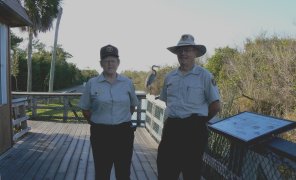
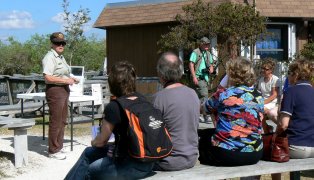
Each of us were responsible to create our own programs for visitors which were then scheduled to take place as a part of the published visitor activities. Each work day, Pam would give a 45 minute talk about wading birds in our part of the park, while Kirk's daily visitor talks were about his favorite subject, alligators. We each spent some time working in the visitor center answering visitor questions and selling items from the store, as well as working with the Junior Ranger program. Our work schedule did vary from one day to the next and some days we would be outdoors pretty much all day. There were also times that we would go out on the tour route and set up a spotting scop for bird observation or do nature talks, several miles from the visitor center.
Probably the most unique part of our duties in the Shark Valley area were those of protecting the alligators from the visitors! Surprisingly to us, while most people do keep a healthy distance between themselves and a basking alligator, there were many visitors who did not seem to grasp the fact that even though those alligators were easily approachable, they are wild animals and can be dangerous. As part of our duties, we had to deal with people who did everything from hitting one with a stick, pulling the tail, or attempting to pose touching one for a picture.
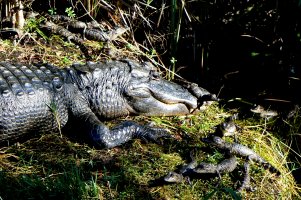
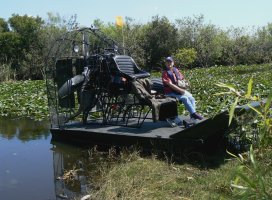
While there we got to go out with one of the law enforcement rangers for a tour of the back country by airboat. It showed us a prospective of the Everglades that few people get a chance to see. In addition to the alligator population, the park is a birder's paradise, particularly for the months of Jan. & Feb. Commonly see bird species cover a very wide range with many of them nesting in the winter home and some who stay all year.
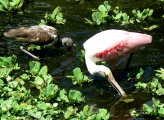

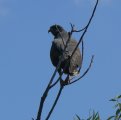

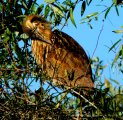
There were also many other things to see and do in Everglades National park. Some of the most entertaining and exciting times were because of the visitors and the things which they did. It was a rare week when we did not have to stop a visitor from getting too close to the alligators for picture or some other foolish reason. But the most entertaining part was the wildlife that we observed while on duty.
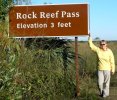
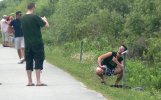
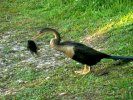
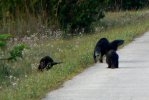
We probably would not again work so many hours for so poor an RV site, but we are also very glad to have had this experience and will long remember the people we worked with and the wonderful things that we experienced.
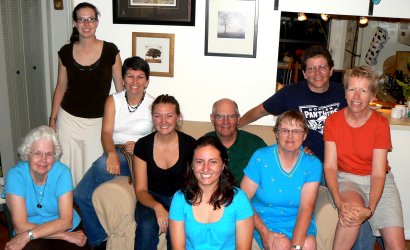
From left: Wendy(bookstore manager), Emma(seasonal ranger), Maria(lead ranger), Chris(seasonal ranger), Claudia(staff ranger), Kirk(vol. ranger), Pam(vol. ranger), Laurie(assist. lead ranger), Connie(visitor center volunteer).
One can not visit central Florida without spending some time a Disney World. But if you have never seen it, it is difficult to imagine, even if you have seen Disney Land and other parks of that magnitude. Disney World has a six lane freeway that goes into the complex. And it has its own public transportation system which is needed as much as in any large city. We feel that we say nearly all of it, we went on most of the rides and we saw the majority of the shows, and to do so we spent from four to 10 hours there on 22 different days! And more is being added. No visitor can begin to see it all in one visit, even if the visit is what Disney calls their "Five Day Park Hopper" pass that allows you to move from one park to the next. Our children & grandchildren did that and were overwhelmed.
For children the Magic Kingdom is the place that all must see but as an adult, if have time to visit only one area of the park make it Epcot. It is by far the most entertaining for the senior set and it also will easily fill more than one day. We spent nearly half of our time at Epcot, once the grandchildren had left for home.
If you are going to spend the winter, or several months of the winter in Florida, I would suggest that you consider getting a season pass, as we did. For those who do winter in Florida, you can get your "Florida Only" driver's license and with it receive resident rates for the long term entry passes to most Florida attractions. I will post more information about that with the "fulltimer" information of this site.
There are many shows and rides at each park. Most of them are well worth the effort to see and only a few rides are of the scary type.
If you can stay late, each park also has a closing show that is worth waiting for. These are productions that rival what you would see anywhere.
In the greatere Orlando area there are also Sea World, Universal Studios and several other major attractions, if Disney World is not enough to satisfy you.
In addition to our time spent at Sea World and Disney World, we also visited several beaches and other things of interest. One of the things we discovered was the fact that Florida is in reality, one very large sand bar. There highest point in Florida is only 600 feet! The main attraction of Florida is her beaches.
Our first stop in Florida was at Hanna Park, owned by the city of Jacksonville, and located next to Mayport. It is located adjacent to the Mayport Naval Station. We found the park to be the nicest park we had seen in quite a long time and the best beach we visited in Florida. We enjoyed this park so much that we chose to spend several days there and we would return if we are ever in that area again.
While in Florida we also visited Coco Beach, Melborn Beach and Vero Beach. While all of them were pretty, we found that the water depth increases so rapidly that small children are not safe if left to play in the water without very close supervision. The town of Coco is pretty interesting and very tourist oriented.
We also spent a day touring Cape Kennedy. It is a great place to visit if you happen to pass this way. The fee gets you two days of entry and is good for both the cape and a museum of the space program. It would be quite easy to spend all of both days if you visit both. Just before we left Florida we traveled south to Lake Okeechobee to visit our friends, the Veache's. We stayed at the Big O RV park, which is right on the shore of the lake. It is a very large fresh water lake in the middle of the Florida land mass. All in all, Florida was an interesting and pretty state.
Kenansville, Florida
We have now completed our tenth different volunteer position. At this location we worked with the Florida Game and Fish Department. We worked for the biologists. The Wildlife Management Area (WMA) is about 52,000 acres and this check station is the control point for about 28,000 of them. There are five campsites here with two of us arriving on Sept. 16, a third about Oct.1, the fourth about Oct. 15 and the last on Nov. 2. We have 50A power but the other four sites have only 30A. All sites have water & sewer as well as a nice level gravel pad, a table, and large site. And a phone line is available at all sites if you wish to pay the bill and get it connected. We are located about 1/2 mile off of the highway and about 14 miles south of Holopaw, Fl. where highway US441 separates from US192. Holopaw is about 20 miles east of St. Cloud, Fl. on US192 or 35 miles from us and that is where the nearest grocery stores are located.
This is a pretty location, very far out in the country, very quiet, and peaceful. If you should wish to come here you need to realize that everything is a long way from you. To visit any attraction in Florida, you will have to drive at least one hour. But for those of us who enjoy solitude, this is the place!
The duties here are the operating of the check station, and routine maintenance on your site and the grounds. Maintenance work can be done during the time spent as check station attendant. When there were only two couples here we each operated the check station from 5:00 AM to 9:00 PM, two days per week. The operation of the station only requires two people for a couple of hours at each end of the day, so Pam did house work and laundry on those days and I would do any maintenance needed as well. The station would be manned by which ever of us was not doing other things. Once the third couple arrived, we went to a rotation of each couple operating the check station in rotation. With five couples, it becomes just over one day per week. The hours are long, but the work is not at all difficult. And the WMA staff are there to train you and assist if needed. You do learn to do some rather different duties in this position.
The check station operators check each hunter into and out of the area to hunt each day, as well as checking all game that is brought out. For wild hogs and turkeys that just means weighing it and if impressive, taking a picture of it. For deer there is a little more as you also are trained to measure the antlers for scoring and to remove one jaw bone for aging the animal and you also attach a game tag for the G&F department. The operator is taught how to do this by the staff.
In the three months we were here there were several special seasons. The first was for archery hunters, but the most interesting was a four day special hunt for the mobility impaired hunter. Many of these hunters were completely unable to walk without assistance. The hunters were, for the most part, a very friendly bunch and we made many new friends while here. We were even given game meat for our own use on several occasions. We also had some rather interesting neighbors!
Work-camping: While we did enjoy our time here, this area was not without it's negative aspects. The water here has a very bad taste and all of us used bottled water for drinking and it also would leave stains on some white clothing if hot water was used in the washing machine. For us, the greatest problem was boredom. After the first few weeks, we found that most days would drag from lack of anything to do. One can only read so long! The weather was warm, very warm at first but pleasant in November and December. The staff and management are friendly and helpful, but the program is poorly managed. It is also 38 miles, one way, to the nearest shopping. On the other hand, you are only about 90 minutes drive from Disney World and if you get an annual pass you can really see and enjoy that place. The Kissimmee area has many tourist attractions. And if you are a square dancer, St. Cloud has two very friendly clubs for that. While we have no regrets about having gone here, we could not recommend it to others with out some reservation.


